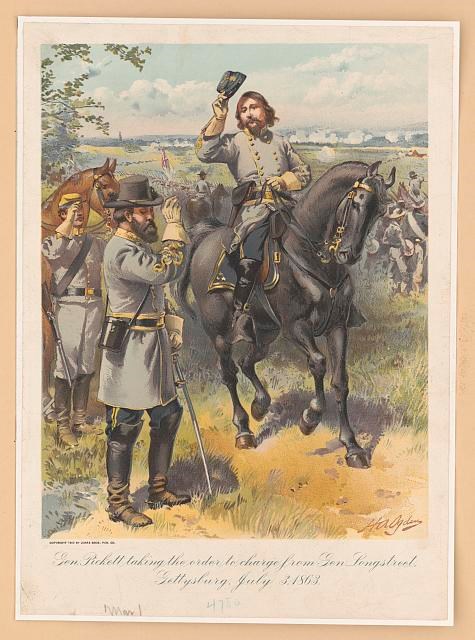Last updated: April 7, 2025
Article
Charge for Victory or Defeat at Gettysburg

Library of Congress
Recipient: Pennsylvania Historical and Museum Commission
Amount: $756,650.25
Acres: 0.63
As part of his plan to reach Washington DC, General Robert Lee and the Confederate armies had engaged in various assaults with Union Troops in prior days with neither side gaining a decisive advantage over the other. On July 3, 1863, the third day of the Battle of Gettysburg, Union troops repelled a massive artillery assault on Cemetery Ridge in southern Pennsylvania. During the early morning hours, Confederate General Robert E. Lee ordered General Longstreet to prepare General Pickett’s troops for the assault. Longstreet advised Lee of his reservations about the success of such an advance, which he did not feel Confederate troops could sustain. Lee disregarded Longstreet and maintained his order for a heavy bombardment of Union defenses on the Ridge followed by an advance of Pickett’s men.
After two hours of heavy shelling, Confederate Colonel Alexander sent word to General Pickett that the Union troops were withdrawing and encouraged him to come quickly in the interval. Pickett sent his note to General Longstreet who, based on Lee’s orders and despite his own reservations, approved the charge.
The attack, commonly known as Pickett’s Charge or Longstreet’s Assault, was an attempt to penetrate the center of Union forces on Cemetery Ridge. During the attack, only one Confederate brigade temporarily reached the top of the ridge. The charge ultimately proved disastrous for the Confederates, with casualties approaching 60 percent. Consequently, Confederate General Robert E. Lee was forced to retreat and ultimately abandon his attempt to reach Washington, D.C. via Pennsylvania.
Battlefield Land Acquisition Grants from the NPS American Battlefield Protection Program empower preservation partners nationwide to acquire and preserve threatened Revolutionary War, War of 1812 and Civil War battlefields. In addition, the program administers three other grant opportunities: Preservation Planning Grants, which are open to all sites of armed conflict on American soil, and the newly authorized Battlefield Restoration and Battlefield Interpretation Grants. This financial assistance generates community-driven stewardship of historic resources at the state, tribal and local levels.
